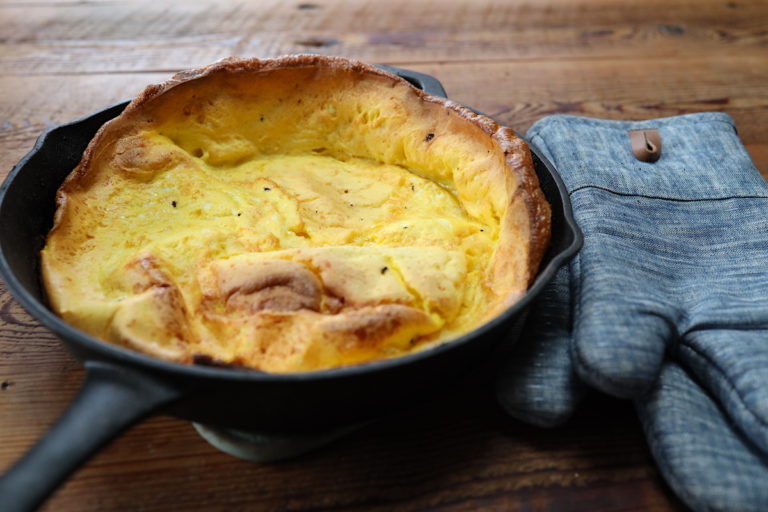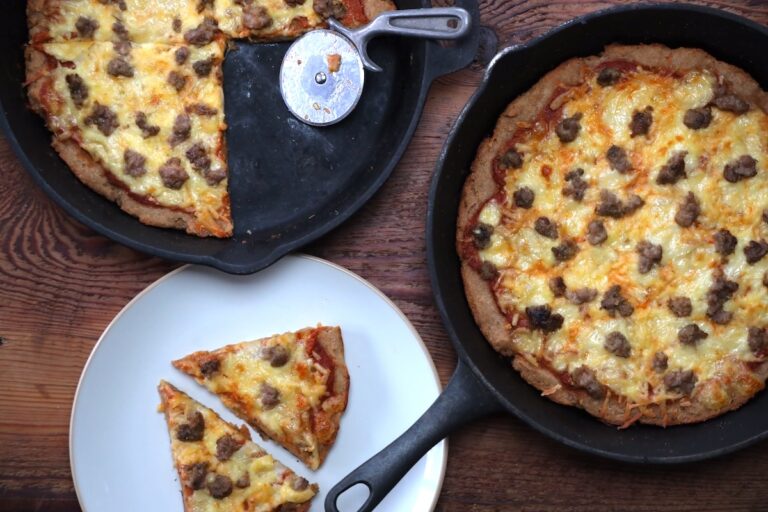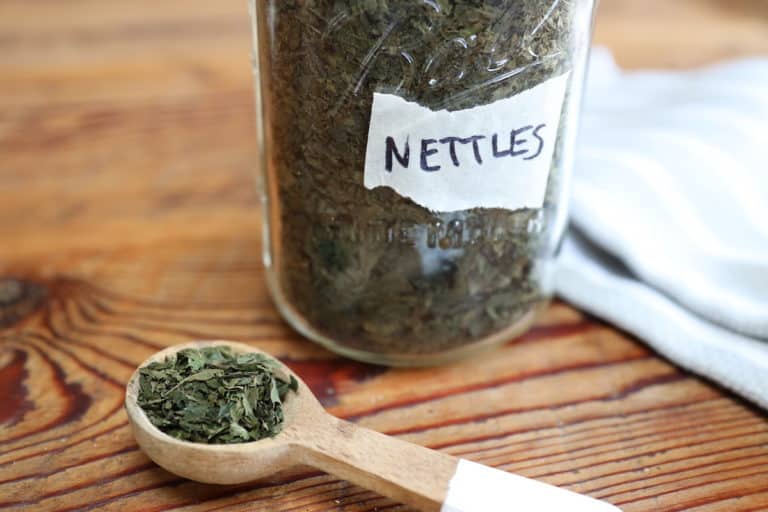Can You Eat Wild Grapes? 5 Ways to Use Them
When we purchased our 5 acre homestead a few years ago in the spring, we had no idea that the perimeter fence was brimming with wild grape plants. By late summer, clusters of deep blue grapes were forming all over our property. But our question was, can you eat wild grapes? And if so, how can we use them?
Can you Eat Wild Grapes?
The short answer – Yes! Wild grapes grow abundantly in the United States. By the late summer or early fall (September – October) they will form clusters of deep bluish – blackish grape fruits forming. They are quite tart to eat fresh (which doesn’t stop our kids) but delicious in many culinary applications. After the first frost, wild grapes do sweeten but they can also begin to dry out making their juice less abundant.
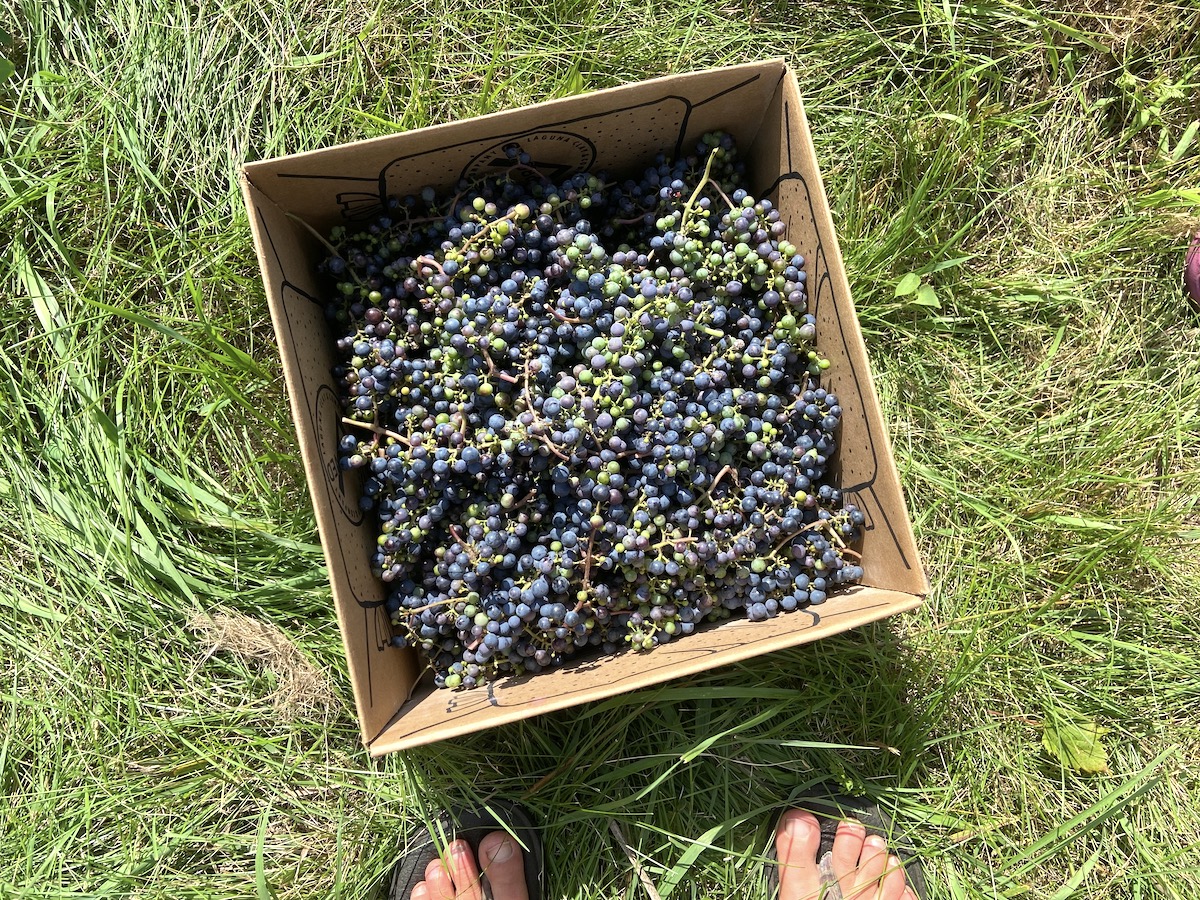
How to Identify Wild Grapes?
They are a long, climbing vine that can grow up to 75 feet long. Wild grapes can be identified by reddish-brown bark, heart-shaped leaves with three lobes and tooth-like margins. You’ll notice tiny yellow-green flowers forming on the vines come springtime. By late summer, fully formed clusters of deep blue grapes will be hanging from the vines.
Wild grapes grow best in full sun and are often found in abandoned fields, riverbanks, along railroad tracks, woodlands, or dunes.
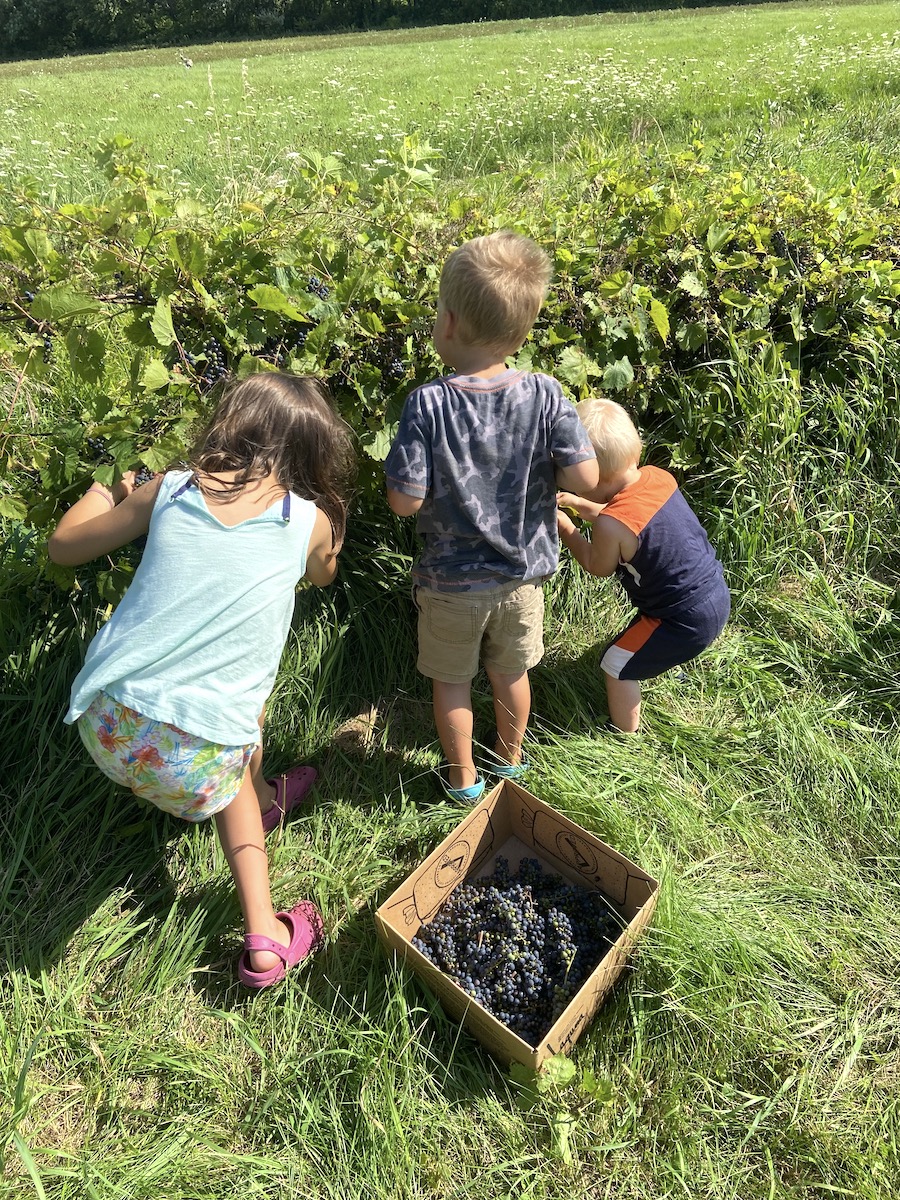

History of Wild Grapes
Wild grapes are native to North America and the plant differs in characteristics from the standard wine grapes commonly grown in Europe. There are many species of wild grapes that grow throughout North America. Some of the most popular varieties include: Fox Grape (Vitis labrusca), Summer Grape (Vitis aestivalis), Riverbank Grape (Vitis riparia), and Frost Grape (Vitis vulpina).
Wild grapes tend to have a thicker skin than standard table grapes, making them more suited for cooking than for eating raw. For Native Americans, wild grapes were a sought-after source of food. There are records of Native Americans using the grapes as food as well as consuming for the fruit and leaves of grape plants for medicinal purposes.

The first Europeans to settle in America had notes that recorded the vast amount of wild growing grapes that they discovered. Even dubbing the new land “Vinland”. These colonizers quickly began using the wild grapes to produce their own wines.
Eventually, Europeans brought these American wild grapes back to be studied. It was found that the native wild grapes were more pest-resistant than the common wine varieties grown in Europe. Many European grape growers actually grafted the varieties they grew to the Wild American Riverbank Grape (Vitis riparia) to help make their plants more pest-resistant.
How to Use Wild Grapes
Traditionally wild grapes would have been used eaten fresh, dried out, or turned into wines, juices, or jams.
Our favorite way to prepare them has been to juice them and then turn them into a favorite snack – wild grape gummies.
How to Make Wild Grape Juice
To juice them, first rinse grapes in a large colander to remove any dirt, debris, or little critters that may be hanging out on those grape clusters. We keep the stems on and just strain them out later in the process.
Place the cleaned grapes in a large stockpot with a ½ cup – 1 cup of water. Turn the heat on and let the grapes simmer and cook down for roughly an hour, using a wooden spoon or potato masher to compress the grapes along the way getting all of the juices out.
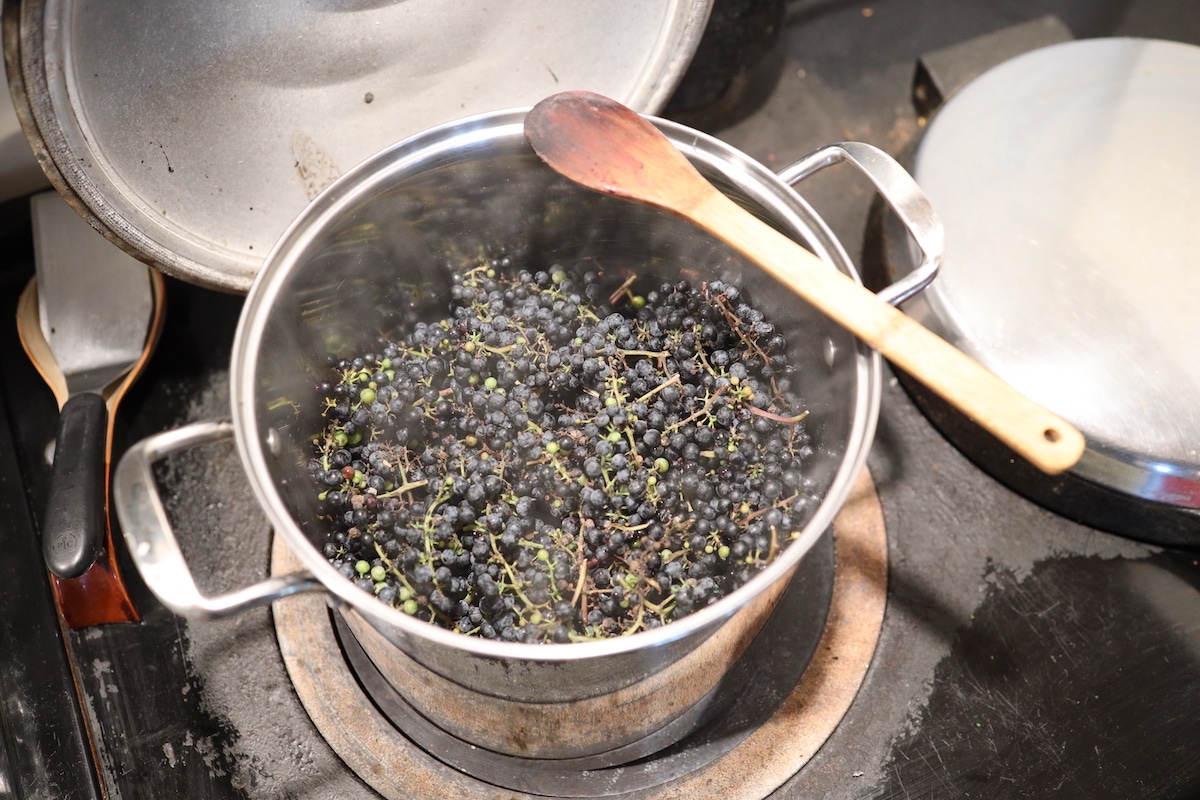

From there, we strain the juice through a fine mesh strainer. This will remove all remaining, stems, skins, and seeds. Straining the grape juice can be a messy process so we recommend doing this in a utility sink or even outside. If you are concerned about some grit getting into your juice, you can strain it with a cheesecloth or run the juice through the mesh strainer a few times.

With the remaining seeds, skins, and stems that were strained out you can either, 1) put them in your compost, 2) give to animals like chickens if you have them, or 3) use them to make a wild grape vinegar (like a red wine vinegar). This is vinegar recipe we have used.
Grape juice on its own is quite tart and not suitable for drinking fresh. But it is excellent to use in cooking as a substitute for red wine or turning into something else like our grape gummies.
Wild Grape Gummies Recipe
After you have your grape juice strained out, it only takes a few more minutes and a couple of ingredients to turn it into grape gummies. I adapted this recipe from our elderberry gummies, another household favorite.
The amount of sweetener you need can vary depending on when you harvest your grapes. I noticed that the juice made from our grapes harvested before the first frost was significantly more tart than the sweeter juice made from our post-frost grapes. This recipe is based on making them with the tarter grapes but if you have sweeter grapes, you will likely not need as much sweetener.
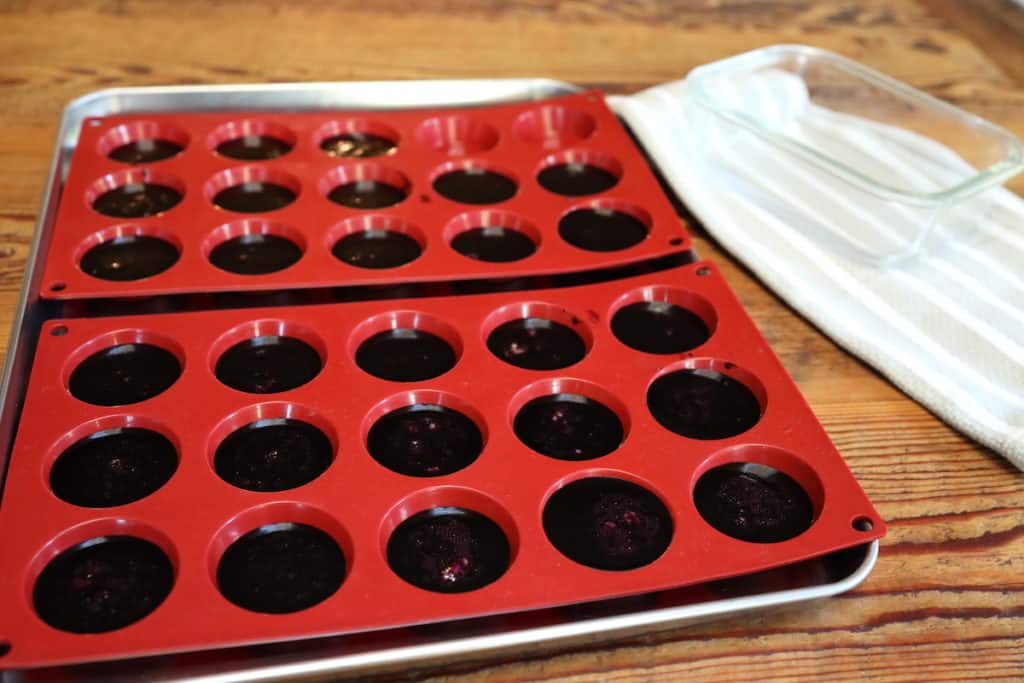
This recipe can easily be adapted for whatever quantities or varieties and juice you have on hand.
Ingredients:
– 1 cup grape juice (unsweetened)
– 1/3 cup honey or maple syrup
– 1/3 cup gelatin
Directions:
Step 1: Heat grape juice in a small saucepan until warmed.
Step 2: Using a whisk, mix in gelatin. The gelatin can easily clump so the whisk is important to help break up those clumps.
Step 3: Once gelatin is stirred into juice, remove from heat and stir in sweetener of choice. Mix thoroughly.
Step 4: Pour into molds, ice cube trays, or an 8×8 pan. We like to use these silicone mini muffin cups. But they also come in all sorts of fun shapes and sizes.
Step 5: Place in fridge for 1-2 hours until the gummies are firm and easily handled when removed.
Step 6: Store in the fridge from 1-2 weeks.
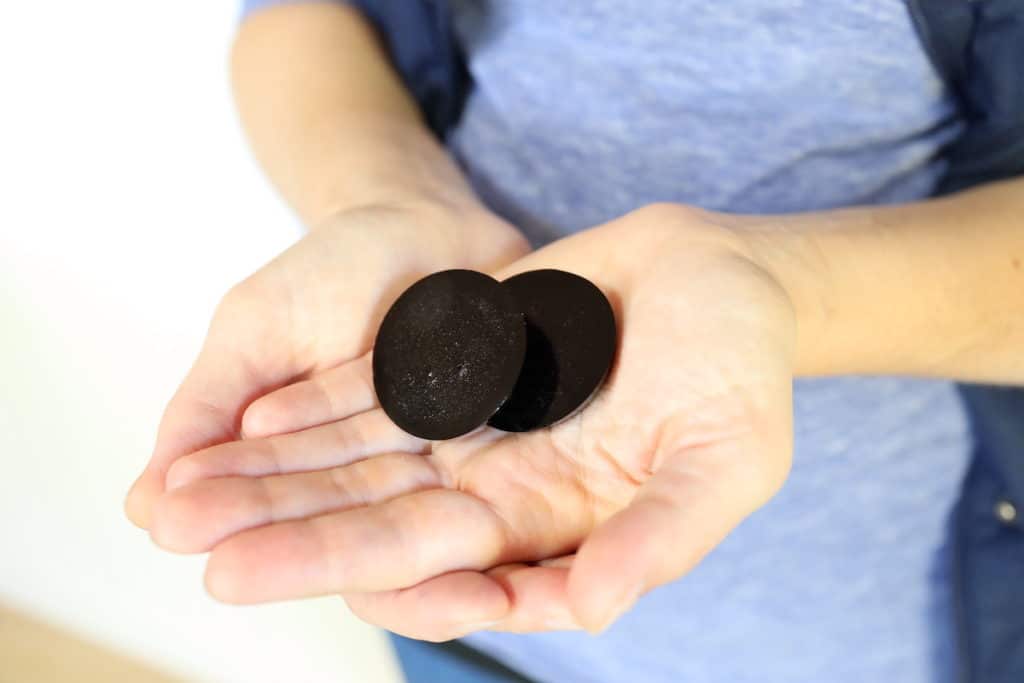
Other Ways to Use Wild Grapes
Wild Grape Jam – Another very popular way to use those grapes is to turn the juice into grape jelly. The only jam to use on a peanut butter and jelly if you ask me. There is debate on whether or not pectin is needed in wild grape jam, but this wild grape jelly recipe is great and walks you through how to make your own.
Wild Grape Sorbet – Turn those delicious fruits into a yummy late summer treat. While we haven’t tried this yet, using our grapes to make this wild grape sorbet is definitely on my list.
Wild Grape Wine – And for the wine lovers out there, here’s a wild grape wine recipe to get started at making your own wine at home. For several years when my parents discovered wild grapes growing along their fences, they had a blast experimenting with home brewing their own wild grape wine.
Can You Eat Wild Grapes?
You betcha! And not only can you eat them, there are so many delicious ways to put those abundantly growing wild fruits to use!
Some of the above links are affiliate links. This means we earn a small commission on qualifying purchases at no cost to you. We are so appreciative of your support!
Get more foraging inspiration:
Pin it for later!


